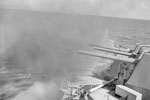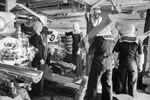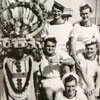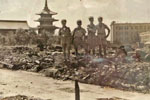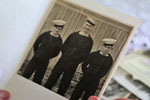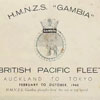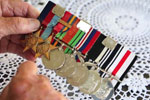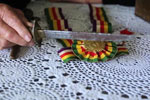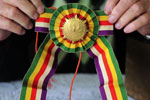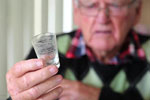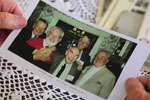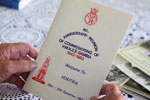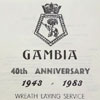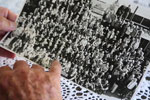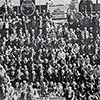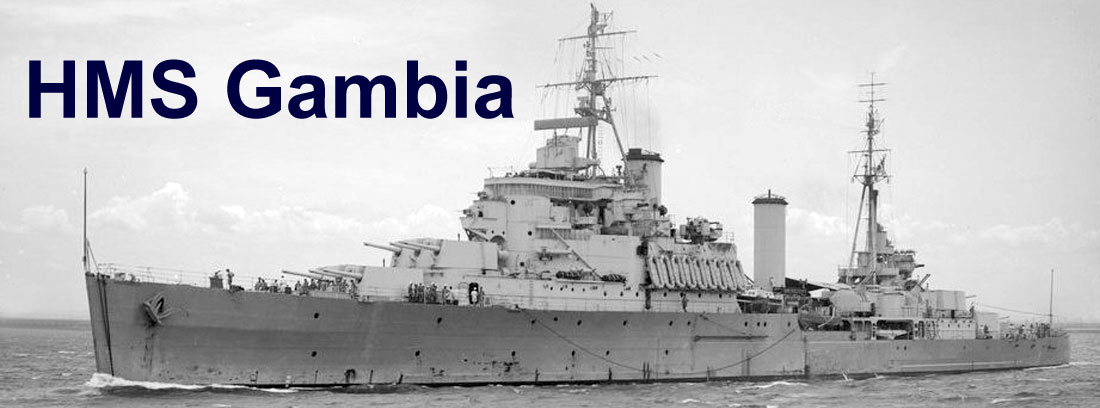
Jim Murray
James (Jim) Murray (NZ 7998)
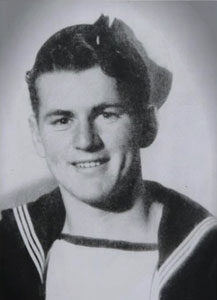
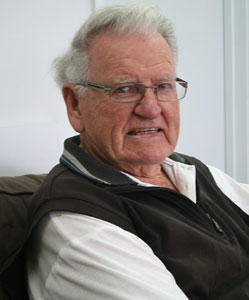
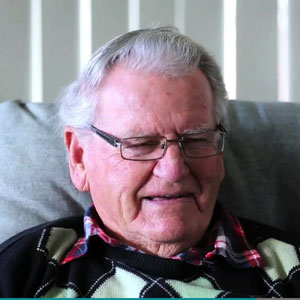
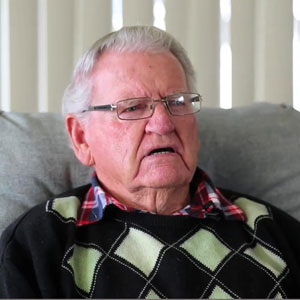
James Murray as a young man, and in 2013, and 2016
James (Jim) Murray (NZ 7998) was one of the gun crew of 'A' Turret of HMNZS Gambia. His job was to load the cordite. In 2013, Jim was one of a delegation of veterans who was flown to Noumea, New Caledonia to commemorate the 70th anniversary of the war in the Pacific. In this 2016 video he describes his experiences during WWII on the ship. Jim was born in 1928 and was 88 when this video was recorded in 2016.
Video: https://www.nzonscreen.com/title/memories-service-james-murray-2016
Firing Last Shots - Rodney Times - April 26, 2013
I made a transcript of the video's audio, and that is avilable here (PDF, 1Mb).
The Rodney Times of April 26 2013 carried this story about Jim who had won ballots to a 70th anniversary event ofthe War in the Pacific in Noumea. It was written by Delwyn Dickey.
James Murray knew something was up when the sky was "aluminium" with planes.
He and other crew members on the cruiser HMNZS Gambia, sailing about 160 kilometres off the Japanese mainland, later watched as a giant mushroom cloud slowly rose in the air above the city of Nagasaki.
It was August 9, 1945.
Mr Murray of Stanmore Bay is one of a delegation of veterans who have been flown by the air force to Noumea, New Caledonia this week, to commemorate the 70th anniversary of war in the Pacific.
It is more than 67 years since the historic nuclear explosion at Nagasaki.
"We didn't see it happen - there was an announcement come over the intercom that a nuclear bomb had been dropped," he says. "From the size of the mushroom cloud we thought they must have blown up the whole island."
A similar bomb was dropped on the city of Hiroshima three days earlier.
A ceasefire was called six days after Nagasaki and the Gambia eventually took over the Japanese naval base at Yokosuka. Mr Murray and other crew members represented the Royal New Zealand Navy on September 2, when the Japanese signed the instrument of surrender on board the USS Missouri in Tokyo Harbour.
But Mr Murray's service didn't end immediately. He was in a group that then headed north to Wakayma to help release prisoners of war.
"They were in a terrible state - shocking. All skin and bones - poor devils."
The prisoners were transported back to Yokosuka by truck and put on to hospital ships, he says.
The Gambia left Japan for Auckland on October 11, 1945.
There was no glory-seeking when the baker's assistant from the North Shore joined up as a 17-year-old two years earlier.
"It was a serious decision because it needed to be done - the Japanese were so close."
Mr Murray trained for three months on Motuihe Island and in the Hauraki Gulf before beginning his service as one of the Gambia gun crew.
The most intense times were in the last few months of the Pacific war as the British Pacific Fleet advanced toward Japan, Mr Murray says.
The ship became part of an anti-aircraft screen for aircraft carriers.
In March 1945, kamikaze pilots started appearing, intent on slamming their planes into the operations centre - the "island" - of the aircraft carriers.
Mr Murray found himself working furiously at times in a turret loading the explosive charge cordite in behind shells fired to cover the carriers. Many planes were shot down.
The Gambia was off the coast of Japan by the end of June and again screening aircraft whose planes were carrying out strikes on the mainland.
A month later it was firing on mainland targets.
The Gambia gun crews have the distinction of firing the last shots of the second world war.
When I was putting this page together I noticed an odd coincidence. The first picture is of Jim Murray who now lives in New Zealand. The second is of Bob Kennedy who now lives in South London, Ontario. But in August 1945, they were both on HMNZS Gambia in the Tokyo Bay. Jim as a gunner in "A" turret, Bob as a Royal Marine.
On August 20, there was a RN/RM landing force from the ship that took the surrender of Yokosuka Naval Base. It would be nice to know if both these men were in that land force and that was where the glasses were liberated from.
James was one of the crewmen who were part of the RN/RM landing force from the ship that took the surrender of Yokosuka Naval Base on August 20, 1945. The platoon of Royal Marines were led by Captain Blake, RM and two platoons of seamen from Gambia with company headquarters under the command of Lieutenant-Commander G.R. Davis-Goff DSC, RNZN took the surrender of the Japanese Naval Base at Yokosuka. The men of the force included Watty Bird, James Murray and Jack Stuart.
In December 2019, a cluster of cases of a pneumonia-like disease appeared in Wuhan in the Hubei Province, China. In January 2020, the new disease, COVID-19, had spread throughout the world leading to a massive effort to contain it.
James was interviewed by John Weekes of Stuff about his service and how that relates to the pandemic crisis. James called on his fellow countrymen to "show strength and solidarity."

James Murray in 2020
The pandemic caused the cancellation of the New Zealand VJ Day celebrations in August and very unfortunately, James was injured in a car accident.
